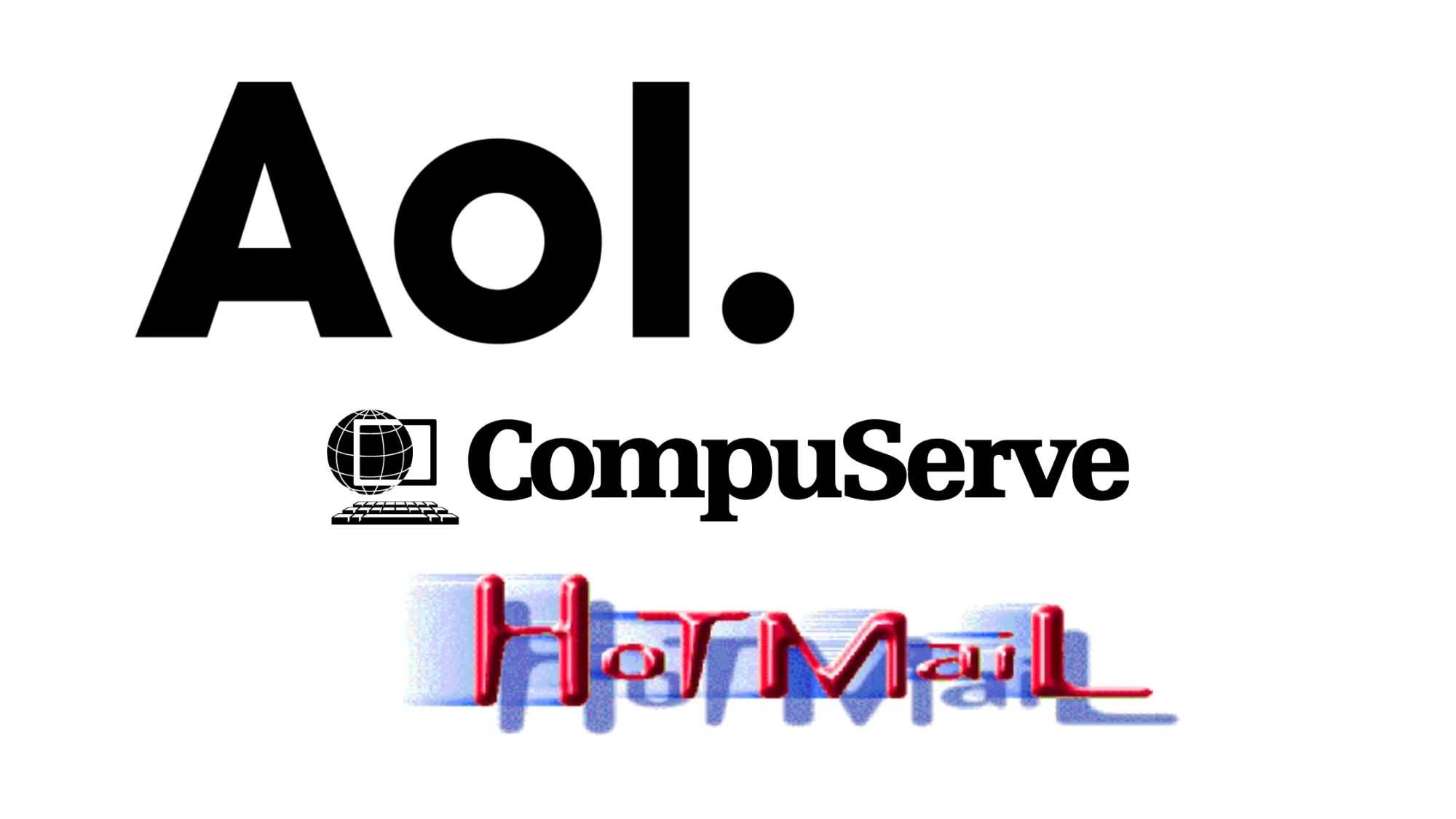The History of Email
Email has evolved into one of the most essential communication tools in today's world, transforming how people and organisations connect. Whether it's a message to a colleague just a few desks away or to a friend on the other side of the globe, email has revolutionised interaction.

The History of Email: A Long Journey from Network Messaging to Global Communication
Table of Contents
Email has evolved into one of the most essential communication tools in today's world, transforming how people and organisations connect. Whether it's a message to a colleague just a few desks away or to a friend on the other side of the globe, email has revolutionised interaction. Its journey from humble beginnings to becoming a global communication staple is marked by technological breakthroughs, cultural shifts, and a redefinition of how we understand and engage in communication.
This long-read article explores the history of email, from its modest beginnings in the 1960s to its widespread use today, illustrating how it evolved from a specialised tool for researchers into a key element of modern life. As a passionate email enthusiast myself, I appreciate how deeply integrated it has become in daily communication.
The Early Foundations
Pre-Email Messaging Systems - 1960s
Long before email became a recognisable concept, the foundation for digital communication was laid through local messaging systems. In the early 1960s, computers operated as isolated, individual machines, and users had no way to communicate directly with others unless they were using the same system. One of the first developments was the Compatible Time-Sharing System (CTSS) at the Massachusetts Institute of Technology (MIT) in 1965. This early system allowed users on the same computer to leave messages for each other, a precursor to email but limited to local communication.
At this stage, "email" as a concept didn’t exist. Users simply left notes in directories shared by multiple people, much like virtual bulletin boards. It was a significant innovation for its time but lacked the ability to send messages across systems.
The critical shift came in 1969 with the advent of ARPANET, the precursor to the modern internet. ARPANET, funded by the U.S. Department of Defense, was initially created to allow researchers to share resources between distant computers. While resource sharing was the primary goal, it was messaging that quickly became one of its most popular applications.
The Birth of Email
Ray Tomlinson's Breakthrough (1971)

Ray Tomlinson, an engineer working on ARPANET in 1971, is widely regarded as the inventor of email as we know it. Tomlinson was working on the development of SNDMSG, a program that allowed users on the same computer to send messages to each other. In a stroke of innovation, he extended the concept, enabling messages to be sent between different computers over the ARPANET network.
This system marked the first true email, allowing users to send messages between separate machines for the first time. Tomlinson also made a now-iconic decision that would shape email communication forever: he used the "@" symbol to distinguish between the recipient's username and the computer (later domain) hosting that account. This simple decision remains a cornerstone of email addressing to this day.
Interestingly, Tomlinson didn’t see his invention as groundbreaking at the time. In fact, he famously said, "It seemed like a neat idea," downplaying the significance of what would become one of the most important inventions in digital communication.
Rapid Growth and Standardisation
(1970s–1980s)
Throughout the 1970s, email usage spread rapidly within ARPANET, eventually overtaking other network services as the primary application. Researchers and academics loved the ability to send quick, asynchronous messages without having to align schedules, and the system's popularity grew.
During this period, various early email programs were developed, each designed to function on specific types of networks. Programs like RD, MSG, and MH emerged as some of the first email systems, primarily used by academics and government officials.
One of the most important developments during this era was the establishment of Simple Mail Transfer Protocol (SMTP) in 1982. SMTP standardised how email messages were transmitted across networks, enabling different email systems to communicate with each other. Before SMTP, email was limited to specific systems, and there was no universal way to send email across different networks.
This standardisation made it possible for email to expand from isolated networks to become part of the broader internet, setting the stage for its eventual widespread adoption.
The Commercialisation of Email
(1980s–1990s)
As email became more standardised, its use quickly spread beyond academic and government circles. In the 1980s, companies like MCI Mail and CompuServe began offering commercial email services, which allowed businesses and individuals to send electronic messages, often at a hefty price. These early systems were often slow, complicated, and expensive, but they provided a glimpse of email’s potential for the corporate world.
The big breakthrough came with the rise of the World Wide Web in the early 1990s. The internet boom of the 1990s introduced email to the mainstream. Companies like AOL and CompuServe launched user-friendly email services that brought electronic messaging to households across the U.S., famously accompanied by the “You’ve Got Mail” notification sound.

However, it was the introduction of Hotmail in 1996 that truly changed the game. Hotmail was one of the first free, web-based email services, allowing users to access their email from any computer with an internet connection. Before Hotmail, email was often tied to a specific internet service provider (ISP), making it inaccessible when users were away from home. Hotmail’s model of providing a free service supported by advertising set the standard for future web-based email platforms.
Yahoo! Mail, which launched a year after Hotmail, quickly became another popular choice, further cementing the web-based email model. As email became more ubiquitous, people began using it not only for work but also for personal communication. In a relatively short period, email became one of the primary ways that people stayed in touch with friends and family, making it a social as well as professional tool.
The Rise of Gmail and the Age of Webmail
(2000s)

By the early 2000s, web-based email was dominating the landscape, but it was still limited in terms of functionality and storage. Google entered the email market in 2004 with the launch of Gmail, and it was a game-changer. Gmail offered users 1GB of free storage, which was revolutionary at a time when other services provided only a few megabytes. This allowed users to keep their emails indefinitely without having to constantly delete messages to free up space.
Gmail also introduced an innovative threaded conversation view, grouping related emails into conversations to make it easier to follow long email exchanges. This drastically improved the user experience and made managing large volumes of email more efficient.
Moreover, Gmail pioneered sophisticated spam filtering technologies, which significantly reduced the amount of junk mail that cluttered inboxes. Its search functionality, borrowing from Google’s expertise in indexing and retrieving data, allowed users to easily find specific emails within their inboxes, another vast improvement over existing systems.
These innovations helped Gmail rapidly grow in popularity, overtaking Hotmail and Yahoo! Mail as the dominant email provider. By integrating seamlessly with other Google products like Google Calendar and Google Drive, Gmail became an essential tool for both personal and business users alike.
Email in the Mobile Age
(2007–2010s)
The next major transformation in email’s history came with the rise of smartphones, particularly the launch of the iPhone in 2007. For the first time, users could easily access their email from anywhere, enabling real-time communication. Email was no longer tethered to desktop computers or laptops, which dramatically increased its utility in both professional and personal contexts.
Mobile access made email an indispensable part of daily life, blurring the lines between work hours and personal time. The rise of push notifications meant that users could be alerted to new messages immediately, further increasing the immediacy of email communication.
The integration of email into smartphone operating systems like iOS and Android also led to the development of dedicated email apps, many of which are still in use today. These apps offered users intuitive interfaces and powerful features, making email more accessible and manageable on small mobile screens.
The Current State of Email
Ubiquity and New Challenges (2020s)
Today, email is a cornerstone of global communication, with over 4 billion users worldwide. It remains one of the most widely used communication platforms for both personal and business correspondence, despite the rise of alternative messaging platforms like Slack, Microsoft Teams, and WhatsApp.
However, the challenges facing email have evolved. Spam and phishing attacks continue to plague users, with cybercriminals frequently exploiting the ubiquity of email to launch scams. On the other hand, innovations in spam filters, end-to-end encryption, and privacy regulations like GDPR have sought to address these issues and make email safer for users.
As email continues to evolve, artificial intelligence (AI) is playing an increasing role in its future. Tools like Google’s Smart Compose and Smart Reply are making it easier for users to manage their emails by suggesting replies and automatically categorising messages. Email is becoming smarter and more efficient, reducing the burden of overflowing inboxes.
Despite the rise of new communication technologies, email's resilience is impressive. Its ability to adapt to new demands, whether through mobile integration, AI enhancements, or better security, ensures that email will remain a critical tool for communication well into the future.
Conclusion
The history of email is one of continuous innovation and adaptation. From its beginnings as a simple way to send messages between computers, it has become a vital part of daily life for billions of people. Though email faces new challenges in the modern era, its evolution demonstrates its capacity to remain relevant.
As email continues to adapt to emerging technologies and shifting user expectations, it will undoubtedly retain its position as one of the most important communication tools in the digital age.
Statistics
The amount of email's sent worldwide over the past ten years and the predicted amounts of the next 10 years.
I'd appreciate it if you could leave a comment below, letting me know your thoughts.
References: